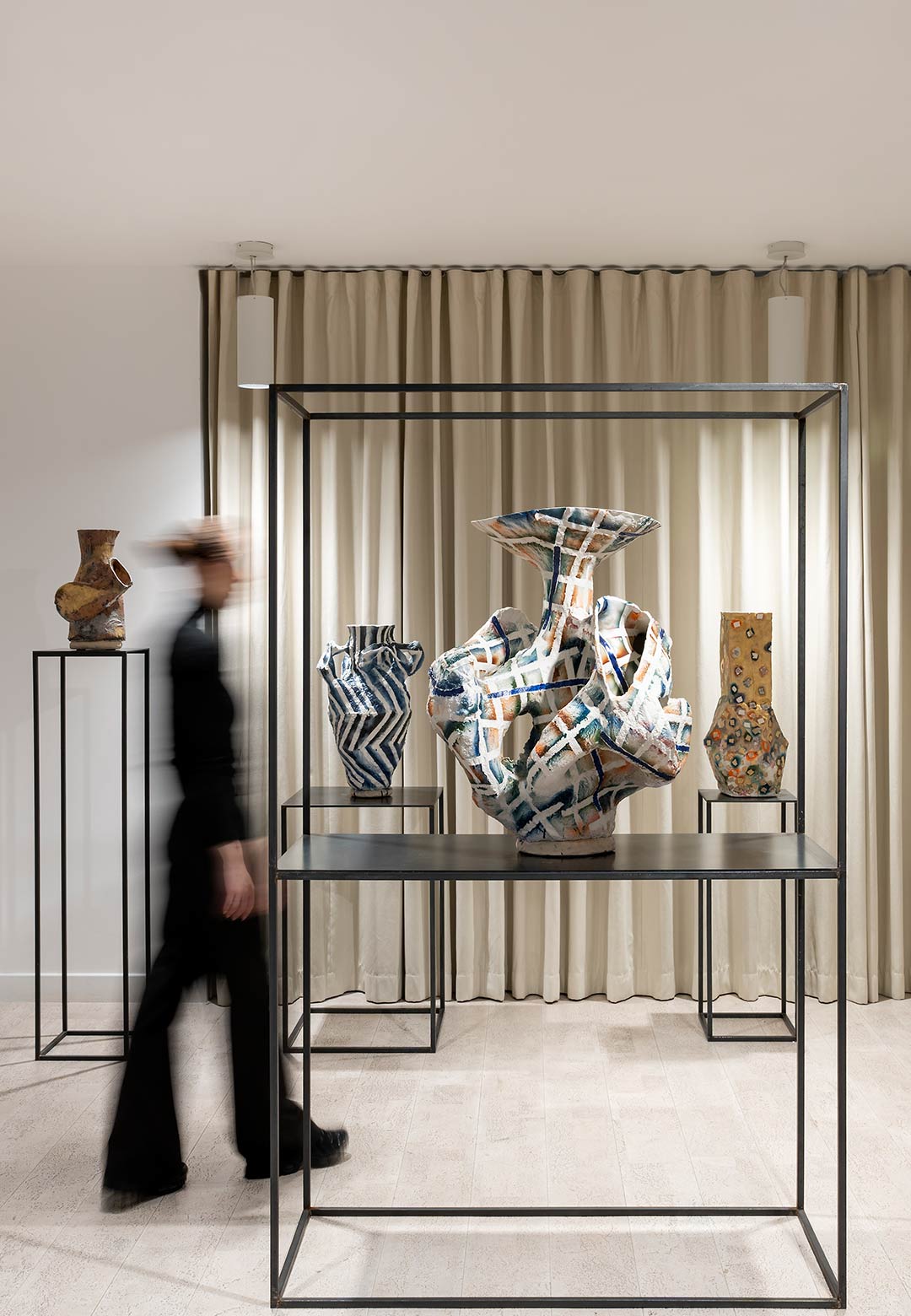At its lower ground floor space, Gallery FUMI unearthed Pattern Language, a solo exhibition of entirely new works by Germany-based ceramic artist Johannes Nagel, where his vessels transfigured into 'sculptural expressions' through bold, spontaneous movements. On view from October 3 – 24, 2024, the design exhibition showcased Nagel's sculptural art vessels that became dynamic and tactile landscapes (unlike a flat canvas), wherein texture and movement seemed to breathe.
"Artists have been decorating the vessels they create for as long as they have been making them, developing an extensive language of pattern over time. A brushstroke or mark, when repeated across the surface of a vessel, transforms into an ornament that enhances its form. In Pattern Language, Nagel reimagines the concept of pattern for the 21st century, pushing it beyond traditional symmetry," shares the contemporary design gallery located at 2-3 Hay Hill, W1J 6AS, Mayfair, London, UK.
Nagel, who studied ceramics at the University of Art and Design Burg Giebichenstein, Halle, Germany, carves these organic ceramic art forms by hand, using a box of sand for casting in porcelain. In his other works, the sculptural artist employs a saw to break down familiar shapes, transforming them into deconstructed geometric objects.
Approaching the vessel's surface as a painter approaches a canvas, to Nagel, a 'pattern' is a dialogue: "a piece of tape winding across the surface, marking a line, while a brush or spray gun interacts with the form, either repeating or contrasting its shape…By juxtaposing contrast with unity, Nagel's works articulate a pattern language that speaks to our contemporary world, redefining ornamentation for the 21st century," as FUMI puts it.
Nagel's works are included in the permanent collections of prestigious institutions such as the Victoria & Albert Museum in London, the Musée Ariana in Geneva, the Keramikmuseum Westerwald in Höhr-Grenzhausen and Keramion in Frechen, Germany. Through his works, the contemporary artist seeks to challenge the traditional view of pottery as merely a functional, domestic and decorative craft, instead elevating clay to a privileged medium for his formal and conceptual explorations. According to the design gallery, by presenting an eclectic array of vessels, the ceramicist engages in the timeless debate of form versus function, control versus spontaneity and rigour versus improvisation.






 Sign in with email
Sign in with email










What do you think?